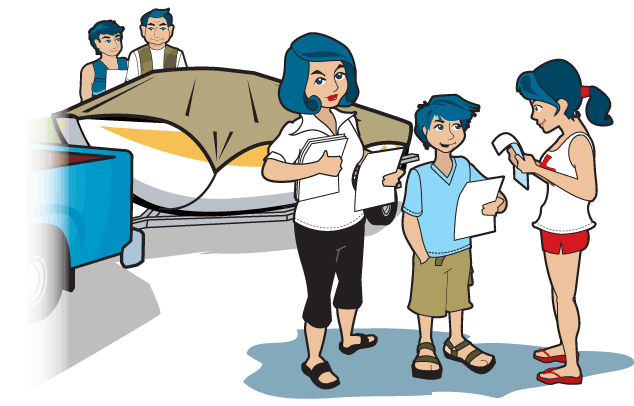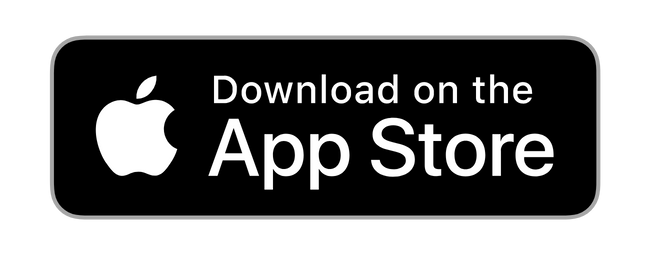
(image provided courtesy of boat-ed.com)
A Float Plan Should Contain What Information? Get Answers To This Question And More Below:
Welcome to our comprehensive test guide on float plans! Whether you’re preparing for your boater test or simply want to understand the importance of float plans, you’ve come to the right place. In this ultimate guide, we’ll delve into everything you need to know about float plans, including what information they should contain and why they’re crucial for boaters. Not only will we break down the questions you may encounter on the boater test regarding float plans, but we’ll also provide a detailed overview of what float plans entail, ensuring you’re well-equipped with the knowledge needed to navigate safely on the water. So, let’s dive in and explore the world of float plans together!
Table of Contents
- A float plan should contain what information?
- You file a float plan for a weekend trip. Which of these should be included in the plan?
- What should you leave with a friend or relative before a long outing on the water?
- What should you do with your float plan for a weekend water outing?
- With whom should you leave a float plan before getting underway?
- Which of these should be included in your float plan?
- List three things that should be included on your float plan before you embark on an extended outing
- Which of these is a benefit of having a float plan?
- When should you file a float plan?
- What should you do with your float plan once your trip is over?
- Check out our other study guides for boating test questions:
- Getting Certified: Passing your boat exam
A float plan should contain what information?
A float plan should contain essential details about your boating trip, including your boat’s description, registration number, and equipment onboard. It should also outline your intended route, departure and arrival times, as well as your estimated time of return. You should also list the names and phone numbers for all passengers onboard, emergency contacts ashore, and any special instructions or medical considerations. Remember, by keeping your float plan up-to-date, you’re making sure that important details are available to assist you and your passengers in case of an emergency.
- If you have other passengers, a float plan should contain what information?
- Name and phone numbers of everyone on board.
- Emergency Contacts for each person on board
- Special medical considerations of any passengers
- In general, a float plan should contain what information?
- Vessel details including boat make, model, and registration number
- Personal details including your intended route and arrival times
Preparing for a boat test is a lot of work. We partner with the top boat certification companies to make sure our test guides are the best in the marine industry. In the next few sections, we’ll cover the most popular questions related to boating float plans. Consider these our Boat Flat Plan Frequently Asked Questions.
You file a float plan for a weekend trip. Which of these should be included in the plan?
If you file a float plan for a weekend trip. Which of these should be included in the plan? A float plan for a weekend trip should include the following essential details:
- Vessel Description: Provide a detailed description of your boat, including its make, model, color, and any distinguishing features.
- Registration Number: Include the official registration number of your vessel as issued by the relevant maritime authority.
- Equipment Onboard: List all safety equipment and emergency gear carried on board, including life jackets, flares, fire extinguishers, and communication devices such as radios or cell phones.
- Intended Route: Outline your planned route, including departure and arrival points, waypoints, and any intermediate stops or destinations.
- Departure and Arrival Times: Specify the exact times you plan to depart from and return to shore.
- Estimated Time of Return: Provide an estimated time of return based on your planned itinerary and expected travel time.
- Passenger Information: Include the names, contact information, and emergency contact details of all passengers on board.
- Special Instructions or Medical Considerations: Note any special instructions for operating the vessel or navigating specific areas. Also, mention any medical conditions or special needs of passengers that may require attention.
- Emergency Contacts Ashore: Provide contact information for trusted individuals ashore who can assist in case of an emergency or if you fail to return as scheduled.
- Alternative Contact: Designate a reliable contact person who can initiate search and rescue procedures if necessary.
By including these details in your boating float plan, you ensure that responsible parties have essential information to assist you in case of an emergency and promote safer boating practices. Keep in mind for boat test studying that when you file a float plan for a weekend trip. Which of these should be included in the plan is a common question with multiple choice answers.
What should you leave with a friend or relative before a long outing on the water?
Before embarking on a long outing on the water, it’s essential to leave a detailed float plan with a trusted friend or relative. If you’re wondering what should you leave with a friend or relative before a long outing on the water? Then be sure your boat plan should include vital information such as:
- Where you’re going
- When you expect to get there
- The description of your boat
- A list of all passengers (including and special notes or medical instructions)
- Emergency contacts
By providing this information before a long outing on the water, you ensure that there is a boat float plan in place that can be used to initiate search and rescue procedures in case of emergencies.
What should you do with your float plan for a weekend water outing?
If you want to know what should you do with your float plan for a weekend water outing, then you came to the right place. For a weekend water outing, it’s crucial you share your completed float plan with a trusted friend or relative. By leaving your float plan with someone ashore, you making sure someone is responsible for providing assistance in the rare case of emergency. Remember to update your boat float plan and communicate any changes to your itinerary during your weekend water outing. What should you do with your float plan for a weekend water outing? Share it!
With whom should you leave a float plan before getting underway?
It’s essential you leave a float plan, before getting underway, with a trusted friend, family member, or relative who will be staying on shore. This person should be reliable and capable of contacting local authorities if necessary. By providing a detailed boating float plan, you’re making sure there is someone available to assist you and your guests in case of an emergency or if you fail to return on schedule.
Which of these should be included in your float plan?
Your float plan should include the following crucial information:
- Vessel Information: Provide details about your boat, including its make, model, registration number, and any distinguishing features.
- Trip Details: Outline your intended route, departure point, destination, and planned stops along the way.
- Departure and Arrival Times: Specify the date and time you expect to depart and arrive at your destination.
- Passenger Information: List the names, ages, and contact information of all individuals onboard, including yourself.
- Emergency Contacts: Include the names and phone numbers of individuals who should be contacted in case of an emergency, such as family members, friends, or local authorities.
- Special Instructions or Medical Considerations: If any passengers have medical conditions or special needs, provide relevant instructions and emergency protocols.
- Equipment and Supplies: Note the safety equipment and provisions you have onboard, such as life jackets, flares, first aid kits, and emergency rations.
- Communication Plan: Describe how you plan to communicate while on the water, including radio channels, cell phone numbers, or other means of contact.
- Alternative Plans: Consider including alternative routes or contingency plans in case of unexpected weather or other hazards.
By including these details in your vessel float plan, you ensure there’s a comprehensive record of your trip, facilitating a timely response in case of an emergency or unexpected event.
List three things that should be included on your float plan before you embark on an extended outing
Here’s three things that should be included on your float plan before embarking on an extended outing:
- Trip Itinerary: A detailed itinerary of your trip, including departure and arrival points, planned stops, and estimated times for each leg of the journey.
- Vessel and Passenger Information: Create a list outlining details about your vessel (including the make, model, registration number, and any distinguishing features), as well as the names, ages, and phone numbers of all passengers onboard.
- Emergency Contacts and Communication Plan: List the names and phone numbers of emergency contacts and outline your communication plan, which includes radio channels, cell phone numbers, or other means of contact while on the water.
For more information on float plans before you embark on an extended outing, check out this boat license study guide.
Which of these is a benefit of having a float plan?
Trying to figure out which of these is a benefit of having a float plan? There are several benefits, including:
- Safety: A float plan enhances safety by providing vital information about your trip to emergency responders in the event of an unforeseen incident or emergency.
- Emergency Preparedness: It ensures that friends, family, or authorities know where you are going and when you are expected to return, facilitating a faster and more effective response in case you encounter difficulties on the water.
- Communication: It serves as a communication tool, allowing you to share your itinerary, route, and contact information with trusted individuals who can assist or raise the alarm if necessary.
- Accountability: By documenting your plans and sharing them with others, you create accountability for yourself, encouraging responsible boating practices and helping to prevent accidents or mishaps.
- Peace of Mind: Knowing that someone is aware of your plans and prepared to assist if needed can provide peace of mind while you’re out on the water, allowing you to focus on enjoying your boating experience.
Knowing which of these is a benefit of having a float plan is a common question on many boating tests. For more information on boat certifications, visit our friends at Boat-Ed.
When should you file a float plan?
You should file a float plan before embarking on any boating trip, especially for extended outings or when visiting unfamiliar waters. It’s essential to file the plan well in advance of your trip to ensure that trusted individuals are aware of your itinerary and can take appropriate action in case of an emergency.
What should you do with your float plan once your trip is over?
Once your trip is over, you may be wondering what should you do with with your float plan. You spent time and effort planning this trip and throwing it away may not seem appropriate. So, what should you do with your float plan once your trip is over? Inform the person you left your float plan with that you have safely returned. This ensures that they know you are back and there’s no need for concern. If you provided your float plan to local authorities or a marina, you should also notify them of your safe return. This not only closes the loop on your trip but also helps prevent unnecessary search and rescue efforts.
What is the purpose of filing a float plan?
The purpose of filing a float plan is to enhance boating safety by providing essential information about your planned trip to a responsible individual or organization before you embark. But what is the purpose of filing a float plan? It’s a proactive measure to make sure someone knows where you’re going and when you expect to return. Your intended route, destination, and expected return time are all details you should include if you’re wondering what is the purpose of filing a float plan. In the event of an emergency or if you fail to return as scheduled, your float plan acts as a vital reference for search and rescue efforts, significantly improving the chances of a timely response and successful outcome.
Check out our other study guides for boating test questions:
- What is draft on a boat?
- How to choose a marine gps app
- The 5 best boating weather apps for 2024.
Getting Certified: Passing your boat exam
Start your safe boating journey at boat-ed.com. Their accredited courses, recognized by NASBLA, the National Association of State Boating Law Administrators, make learning boater safety, etiquette, and water rules easy and accessible. With interactive courses available on all devices, prioritize safety as you prepare for your exam.
You can get a preview of what this, and other questions may look like on a boating test by visiting our friends at Boat-Ed. Check out their study guide.








